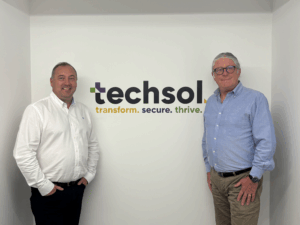Selecting the right ERP software is one of the most critical decisions a business can make. It’s a significant investment of time and resources, so choosing a solution that aligns with your business needs is essential. With countless options on the market, choosing the right solution for your business can be challenging. To ensure you make an informed choice, here are five key areas to consider when evaluating ERP software:
1. System fit
Your ERP system must align with your company’s specific needs. Does the software cater to your industry? Can it handle your current processes without requiring drastic changes? Consider the system’s compatibility with your existing workflows and future growth. An effective ERP system should address business challenges, boost productivity, and support growth. Finding a solution that fits well with your operations will lead to a smoother implementation and better long-term performance.
Sage 200 and Sage Intacct are both leading ERP solutions but are tailored to meet the needs of different types of businesses. Sage 200 is tailored for medium-sized businesses that need a flexible ERP solution with the option for on-premise or cloud deployment, offering comprehensive financial management and industry-specific modules. On the other hand, Sage Intacct provides cloud-based financial management with strong core financials, scalability for growing organisations, robust reporting capabilities, and an extensive library of third-party add-ons to further enhance functionality.
2. Functionality
While many ERP systems provide core functionalities like finance, project management, and supply chain management, the real value lies in the features that meet your company’s unique needs. Review the specific modules offered and how well they integrate into your business processes and address your current challenges. Ensure the solution supports essential areas relevant to your operations.
Sage Intacct delivers powerful core financials with deep functionality for organisations with complex finances, such as multi-entity, multi-currency operations, or those requiring multi-dimensional reporting. In contrast, Sage 200 provides a broader suite of modules for businesses looking to manage their finances, operations, and customer service efficiently.
3. Customisability
Every business has unique needs, processes, and challenges. A rigid, one-size-fits-all ERP solution may limit your flexibility. Evaluate the level of customisation the ERP system allows to adapt to your company’s specific needs. Does it provide options for configuring dashboards, workflows, and reporting to match your team’s preferences? The more customisable the system, the better it will evolve alongside your business.
Both Sage Intacct and Sage 200 offer extensive customisability, allowing you to create custom dashboards and reports, modify fields and forms, tailor processes to fit your business needs, and integrate seamlessly with a range of other software and systems.
4. Vendor and partner reputation and support
Selecting an ERP solution involves evaluating the vendor and their partner network as well as the software. Investigate the reputation of the vendor and their partners —do they have a proven track record in your industry? A well-planned implementation and effective training are crucial to your system’s success. Beyond the product, assess the support services they offer. A good partner should offer reliable, ongoing support, getting to know your business and adapting as your needs evolve.
At Techsol, our 20+ years of experience as a Sage partner ensures our customers receive comprehensive and knowledgeable support throughout their ERP journey. With our deep local and industry insight, we provide end-to-end services that are tailored to your evolving business needs. Our expert consultants will guide you through every step, from selecting the right solution to implementation, customisation, training, and ongoing support. We are here as a reliable source of expertise you can count on well beyond go-live.
5. Total cost of ownership
ERP solutions come with varying costs, but the total cost of ownership goes beyond the initial purchase. Consider hidden costs such as implementation fees, customisation expenses, maintenance, and future upgrades. A lower-cost solution may be more expensive in the long run if it requires excessive modifications or doesn’t scale well with your business. While the initial investment may be high, it’s essential to consider the return on investment (ROI). A well-implemented ERP solution should deliver long term gains that outweigh the costs, improving efficiency, scalability, and overall business performance.
With Sage 200, businesses can benefit from a cost-effective on-premise or cloud option, while Sage Intacct’s cloud-native subscription model helps manage costs predictably as your business scales.
Evaluating ERP software is a critical process that demands careful consideration of how well the system fits your needs, its functionality, customisability, vendor support, and the long-term costs. By focusing on these five critical areas, your finance leaders can make a more informed decision that leads to a smoother implementation and long-term success.
Ready to explore ERP solutions tailored to your business needs? Get in touch with us today to find out how we can help you streamline your operations with the right solution. You can contact us on 03300 245 447 or email info@techsol.co.uk.






